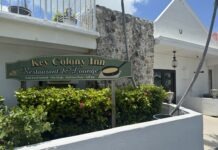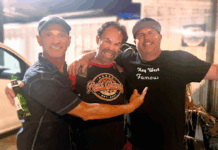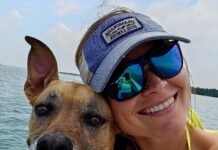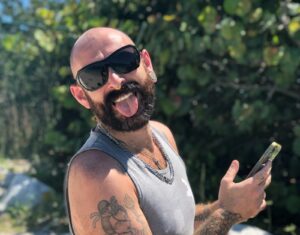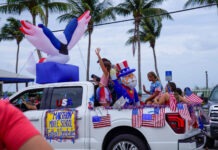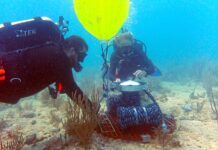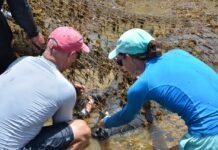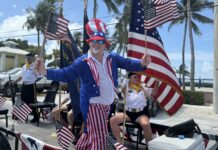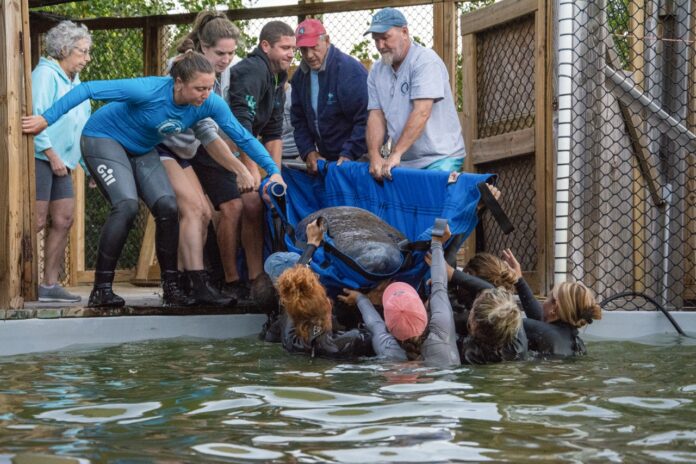
As wildfires torched more than 26,000 acres in South Florida and caused closures of the 18-Mile Stretch entering the Florida Keys last week, angry motorists on U.S. 1 weren’t the only ones who couldn’t make their way out.
On March 20, for the first time in the facility’s history, Grassy Key’s Dolphin Research Center hosted an emergency overnight stay for a 9-foot male manatee with a pneumothorax – commonly known as a collapsed lung – rescued from canals in Marathon’s Coco Plum neighborhood.
Likely caused by a boat strike, a pneumothorax injury causes air from a collapsed lung to fill a space between the lung and the wall of the chest cavity. Unable to release the air from where it doesn’t belong, manatees with this life-threatening condition become positively buoyant and are unable to dive in order to avoid other boats and carry out their daily functions. As the manatee remains tilted at the surface, the other lung can become strained and suffers an increasing risk of collapse.
As the only licensed manatee rescue team in the Keys, a typical rescue for DRC’s crew usually involves a collaborative effort to locate and collect an injured animal, working with members of the public as well as team members from Aquarium Encounters and FWC.
Once secure on land, if an immediate treatment and release isn’t possible, the injured animal is immediately transported to a mainland rehabilitation and critical care facility in FWC’s animal transport truck.

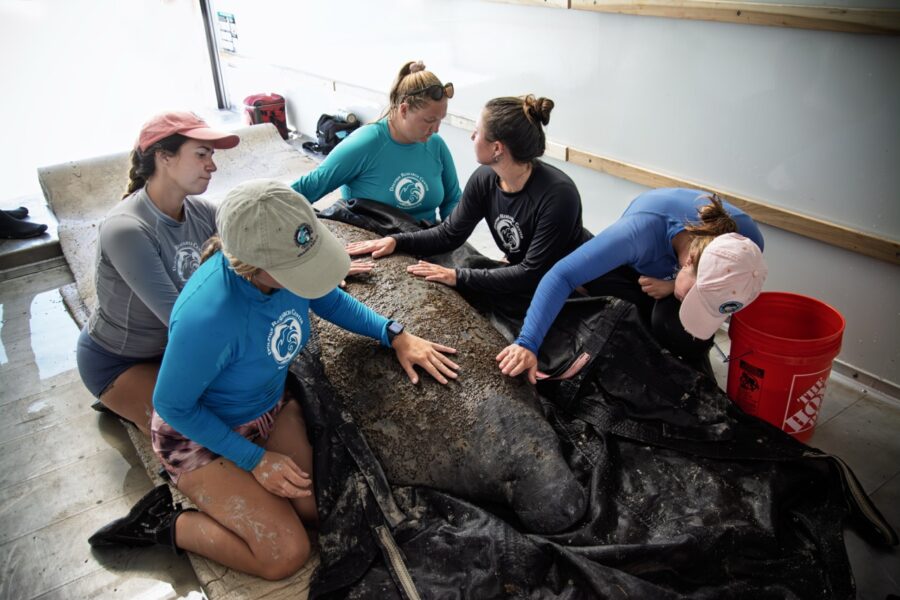





Closures of the Stretch threw a wrench in those plans last Thursday as the fires prevented FWC’s transport crew from reaching the Middle Keys until the morning of March 21. Led by medical director Dr. Scott Gearhart, the DRC team repurposed a quarantine pool to provide a one-night stay for the overly-buoyant sea cow.
The team eventually celebrated a successful transfer to FWC’s transport crew and a departure to SeaWorld Orlando in the early morning hours on Friday. He was eventually confirmed to have suffered broken ribs and exhibited inflammatory blood values, and at press time, DRC CEO Rita Irwin and Gearhart told the Weekly that his prognosis was still guarded.
“As far as I know, this is the first time that a (manatee) has actually been transported to Dolphin Research Center,” said Gearhart, a former SeaWorld vet himself. “I’ve been dealing with rescued manatees and been involved in their rehabilitation and care for about 33 years, so I’m very familiar with how to care for an injured or otherwise distressed animal.”
“Our team comes together no matter what the challenge is and focuses on what’s best for an animal,” said Irwin. “This crew, which was so busy in the height of the season, was not only able to get the animal, but at 7 a.m. the next morning they were ready to lift it into FWC’s truck. The commitment and professionalism of our team is awe-inspiring, and I’m proud to be a part of it.”
Manatees are federally protected under the Marine Mammal Protection Act of 1972 – meaning feeding, harassing or deliberately interacting with them is illegal. If you see a manatee in distress, call 1-888-404-3922. Do not attempt to approach or assist the manatee, and do not enter the water with any wild marine mammal.




